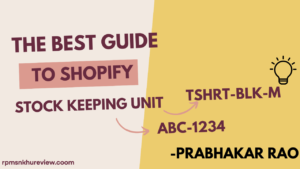Overview:Leadpages vs Clickfunnels
In the realm of online marketing tools, Leadpages vs Clickfunnels stand out as top contenders, each offering distinct advantages for businesses aiming to create impactful landing pages and sales funnels. This comparison will delve into the nuances between Leadpages and ClickFunnels, helping you discern which platform aligns best with your objectives.
Table of Contents
Leadpages serves primarily as a landing page builder, empowering users to craft compelling, high-conversion landing pages effortlessly. Its array of customizable templates caters to both novices and seasoned marketers. Leadpages boasts A/B testing functionality, enabling users to experiment with different page versions to optimize performance.

ClickFunnels, in contrast, presents a more holistic approach as a sales funnel builder, enabling users to create not just landing pages but complete sales funnels. With a variety of pre-designed funnel templates, ClickFunnels guides users through the sales journey, making it ideal for businesses seeking to boost online sales.

Both Leadpages and ClickFunnels integrate seamlessly with popular marketing tools like email marketing platforms and CRM systems, simplifying their incorporation into your existing marketing arsenal.
Features:Leadpages vs Clickfunnels
When comparing Leadpages and ClickFunnels, it’s crucial to understand the distinct features that each platform offers. Let’s take a closer look at the key features of both tools.
Leadpages offers a range of features designed to simplify the process of creating high-quality landing pages. Some of its key features include:
- Drag-and-Drop Builder: Leadpages provides an intuitive drag-and-drop builder that allows users to easily customize their landing pages without any coding knowledge.
- Template Library: Leadpages offers a vast library of mobile-responsive templates that are designed to convert visitors into leads.
- Lead Capture Forms: Leadpages allows users to create customizable lead capture forms to collect visitor information.
- A/B Testing: With Leadpages, users can easily create and test different versions of their landing pages to see which one performs better.

ClickFunnels, on the other hand, is focused on helping users create complete sales funnels. Some of its key features include:
- Funnel Templates: ClickFunnels offers a variety of pre-built funnel templates that are designed to guide visitors through the sales process.
- One-Click Upsells and Downsells: ClickFunnels allows users to easily add one-click upsells and downsells to their funnels to increase revenue.
- Membership Sites: ClickFunnels enables users to create membership sites and deliver digital content to their customers.
- Email Integration: ClickFunnels integrates with popular email marketing platforms, allowing users to easily follow up with leads.
Pricing:Leadpages vs Clickfunnels
Understanding the pricing structures of Leadpages and ClickFunnels is crucial when deciding which platform to choose. Let’s break down the pricing plans for both tools.
Leadpages offers three main pricing tiers:
- Standard Plan: Priced at $37 per month (billed annually), this plan includes unlimited landing pages, pop-ups, and alert bars, along with free custom domain hosting.
- Pro Plan: Priced at $74 per month (billed annually), this plan includes all the features of the Standard plan, plus online sales and payments, unlimited A/B split testing, and email trigger links.
- Advanced Plan: Priced at customizable per month (billed annually), this plan includes all the features of the Pro plan, along with advanced integrations, 1-on-1 quick start call, and virtual workshops.

ClickFunnels also offers three pricing plans:
- Standard Plan: Priced at $127 per month, this plan includes 20 funnels, 100 pages, and the ability to handle up to 20,000 visitors per month.
- Pro Plan: Priced at $157 per month, this plan includes unlimited funnels, pages, and visitors, along with additional features like follow-up funnels and priority support.

Templates:Leadpages vs Clickfunnels
The templates offered by Leadpages and ClickFunnels play a significant role in creating visually appealing and effective landing pages and sales funnels. Let’s explore the template options provided by both platforms.
Leadpages boasts a diverse library of templates, with over 150 professionally designed options to choose from. These templates cover various industries and use cases, making it easy for users to find a design that suits their needs. Leadpages’ templates are also mobile-responsive, ensuring that your landing pages look great on any device.
ClickFunnels also offers a wide range of templates, with over 100 pre-designed funnel templates available. These templates are designed to guide visitors through the sales process, from initial opt-in to final purchase. ClickFunnels’ templates are highly customizable, allowing users to tailor them to their specific needs.
Integration:Leadpages vs Clickfunnels
The ability to integrate with other tools and services is crucial for maximizing the effectiveness of Leadpages and ClickFunnels. Let’s explore how these platforms integrate with other marketing tools.
Leadpages offers a range of integrations with popular marketing tools and services, including email marketing platforms like Mailchimp, AWeber, and ConvertKit, as well as CRM systems like Salesforce and HubSpot. Leadpages also integrates with payment processors like Stripe and PayPal, making it easy to collect payments through your landing pages.
ClickFunnels also offers extensive integration options, with native integrations with email marketing platforms like GetResponse, ActiveCampaign, and Infusionsoft, as well as CRM systems like Zoho CRM and Ontraport. ClickFunnels also integrates with payment processors like ClickBank and JVZoo, allowing users to easily process payments within their funnels.
User Interface:Leadpages vs Clickfunnels
The user interface (UI) of Leadpages and ClickFunnels plays a significant role in user experience and ease of use. Let’s explore how the user interfaces of these platforms compare.
Leadpages features a clean and intuitive user interface, with a drag-and-drop builder that makes it easy to customize landing pages. The dashboard is well-organized, with tabs for accessing templates, analytics, and other settings. Leadpages’ UI is designed to be user-friendly, making it accessible to both beginners and experienced marketers.
ClickFunnels also offers a user-friendly interface, with a visual editor that allows users to build sales funnels with ease. The dashboard provides a clear overview of your funnels, with options to edit, clone, or delete them. ClickFunnels’ UI is designed to streamline the funnel-building process, making it easy to create complex sales funnels without any coding knowledge.
Support:Leadpages vs Clickfunnels
When it comes to using marketing tools like Leadpages and ClickFunnels, having access to reliable support can make a big difference. Let’s explore the support options offered by both platforms.
Leadpages provides several support options to help users get the most out of the platform. This includes a knowledge base with articles and tutorials covering a wide range of topics, as well as email support for more specific queries. Leadpages also offers live chat support during business hours, allowing users to get immediate assistance when needed.
ClickFunnels also offers a variety of support options to help users navigate the platform. This includes a comprehensive knowledge base with articles and videos, as well as email support for more personalized assistance. ClickFunnels also provides access to a private Facebook community where users can interact with each other and get advice from experts.
Pros and Cons:Leadpages vs Clickfunnels
When comparing Leadpages and ClickFunnels, it’s important to consider the pros and cons of each platform. Let’s take a closer look at the strengths and weaknesses of Leadpages and ClickFunnels.
Leadpages
Pros:
- Easy-to-use drag-and-drop builder for creating landing pages.
- Wide range of professionally designed templates.
- A/B testing functionality to optimize landing page performance.
- Affordable pricing plans, especially for small businesses and startups.
Cons:
- Limited in terms of creating complete sales funnels.
- Some advanced features may require integration with third-party tools.
- Customer support options are not as extensive as some other platforms.
ClickFunnels
Pros:
- Comprehensive sales funnel builder with pre-designed templates.
- Easy-to-use visual editor for building complex funnels.
- Integration with popular marketing tools and services.
- Extensive training and support resources for users.
Cons:
- Higher pricing compared to Leadpages, especially for the Platinum and TwoCommaClubX plans.
- Steeper learning curve, especially for beginners.
- Limited customization options for templates compared to Leadpages.





Pingback: Builderall vs ClickFunnels: 2024 - Which is the Best - RPMSNKHU Reviews